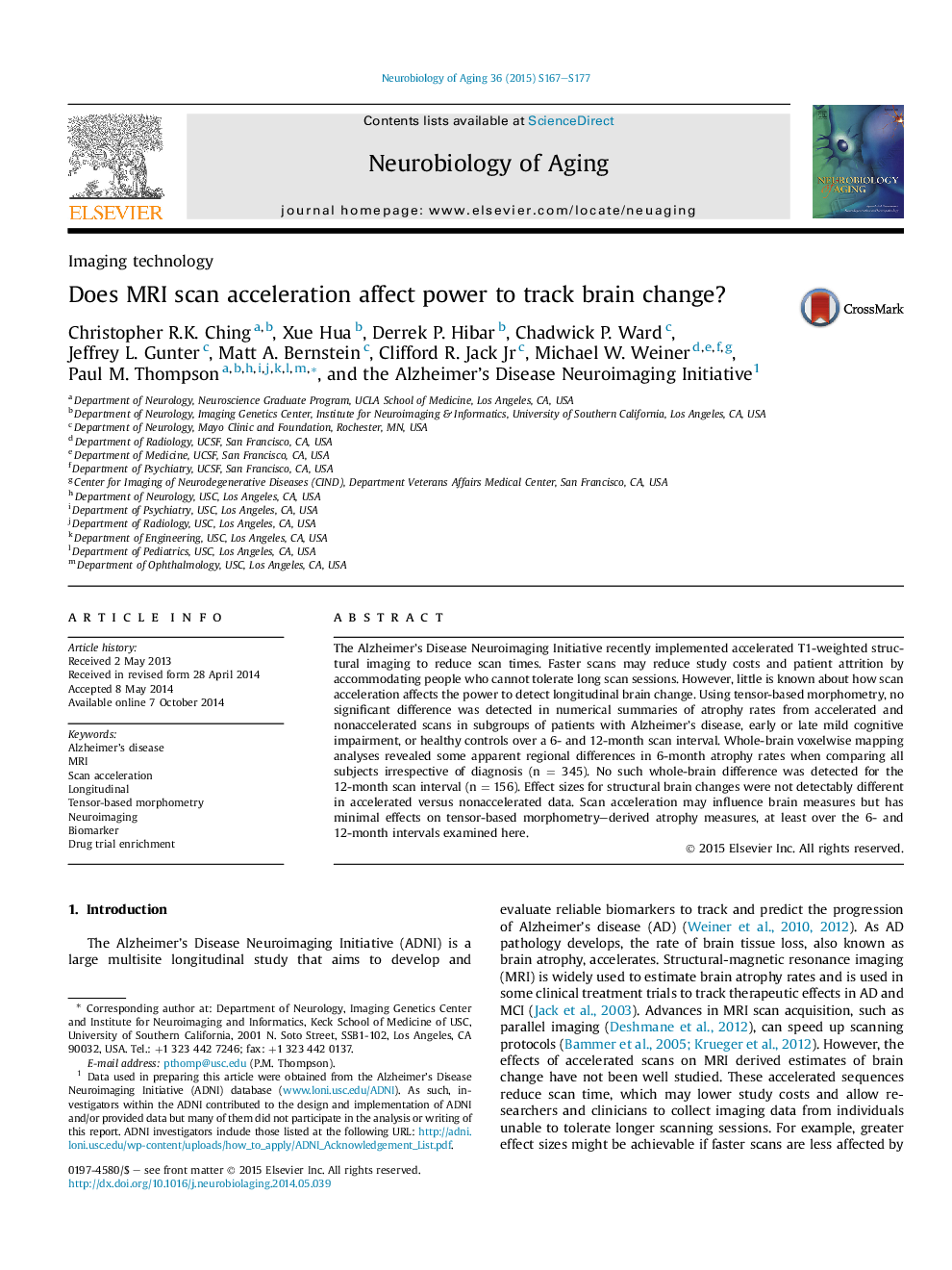| Article ID | Journal | Published Year | Pages | File Type |
|---|---|---|---|---|
| 6805277 | Neurobiology of Aging | 2015 | 11 Pages |
Abstract
The Alzheimer's Disease Neuroimaging Initiative recently implemented accelerated T1-weighted structural imaging to reduce scan times. Faster scans may reduce study costs and patient attrition by accommodating people who cannot tolerate long scan sessions. However, little is known about how scan acceleration affects the power to detect longitudinal brain change. Using tensor-based morphometry, no significant difference was detected in numerical summaries of atrophy rates from accelerated and nonaccelerated scans in subgroups of patients with Alzheimer's disease, early or late mild cognitive impairment, or healthy controls over a 6- and 12-month scan interval. Whole-brain voxelwise mapping analyses revealed some apparent regional differences in 6-month atrophy rates when comparing all subjects irrespective of diagnosis (n = 345). No such whole-brain difference was detected for the 12-month scan interval (n = 156). Effect sizes for structural brain changes were not detectably different in accelerated versus nonaccelerated data. Scan acceleration may influence brain measures but has minimal effects on tensor-based morphometry-derived atrophy measures, at least over the 6- and 12-month intervals examined here.
Related Topics
Life Sciences
Biochemistry, Genetics and Molecular Biology
Ageing
Authors
Christopher R.K. Ching, Xue Hua, Derrek P. Hibar, Chadwick P. Ward, Jeffrey L. Gunter, Matt A. Bernstein, Clifford R. Jr., Michael W. Weiner, Paul M. Thompson, Alzheimer's Disease Neuroimaging Initiative Alzheimer's Disease Neuroimaging Initiative,
